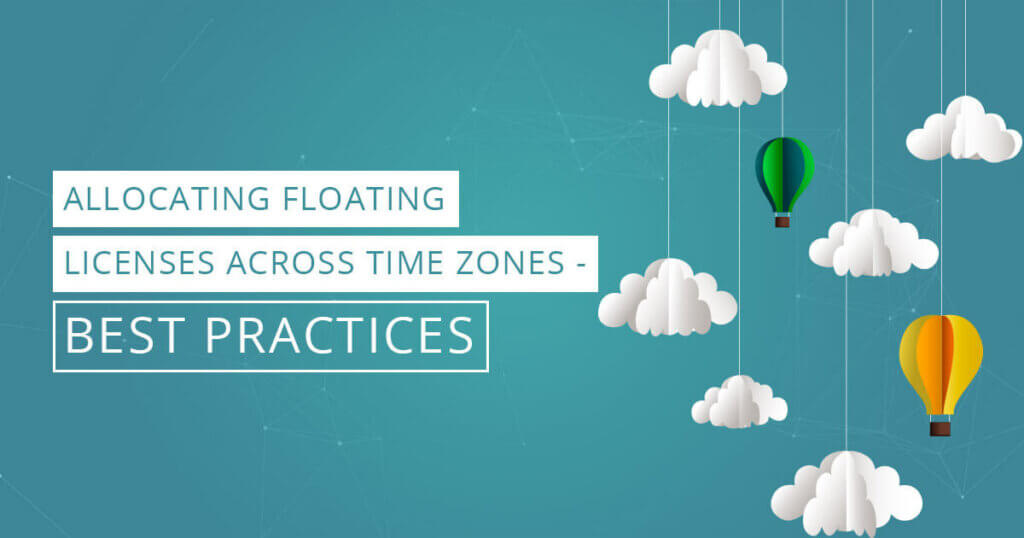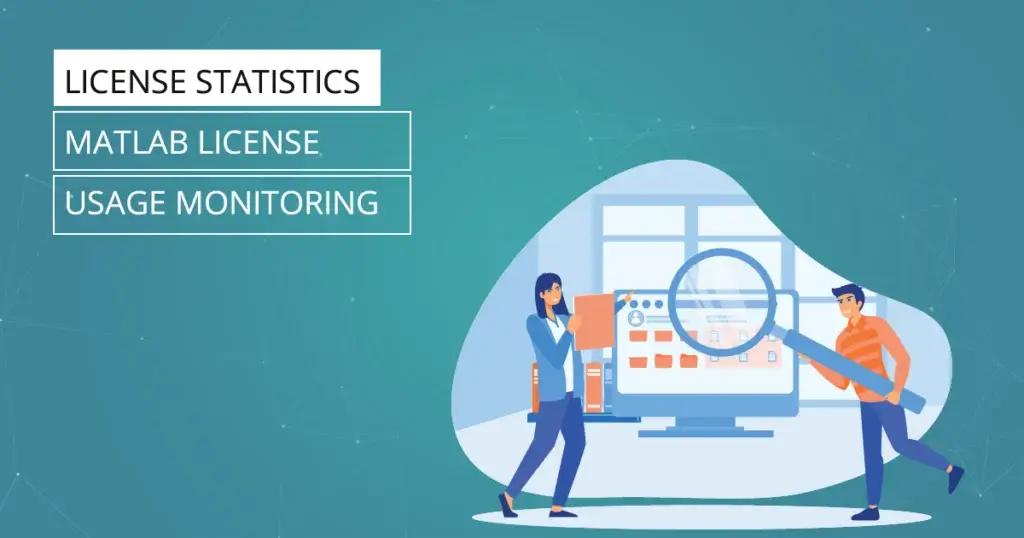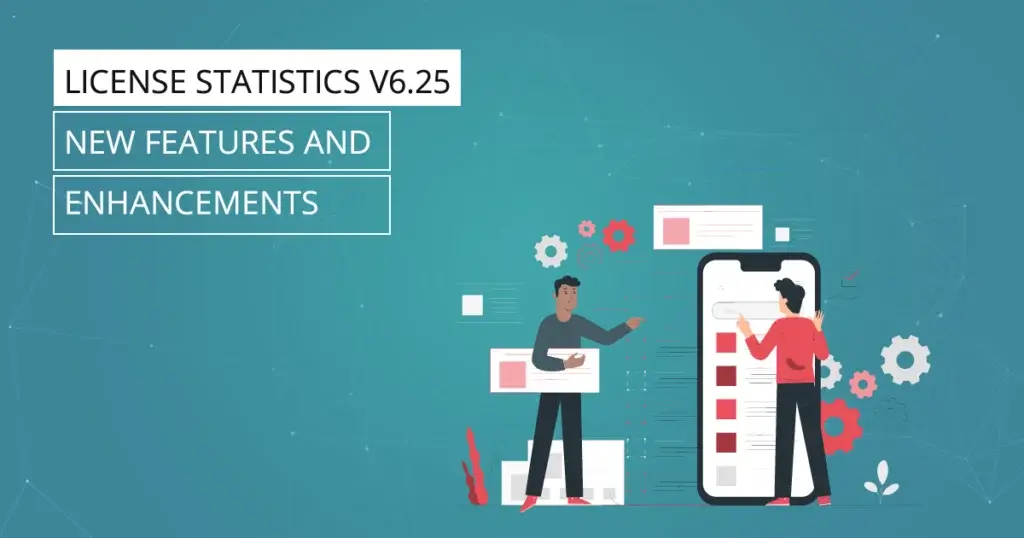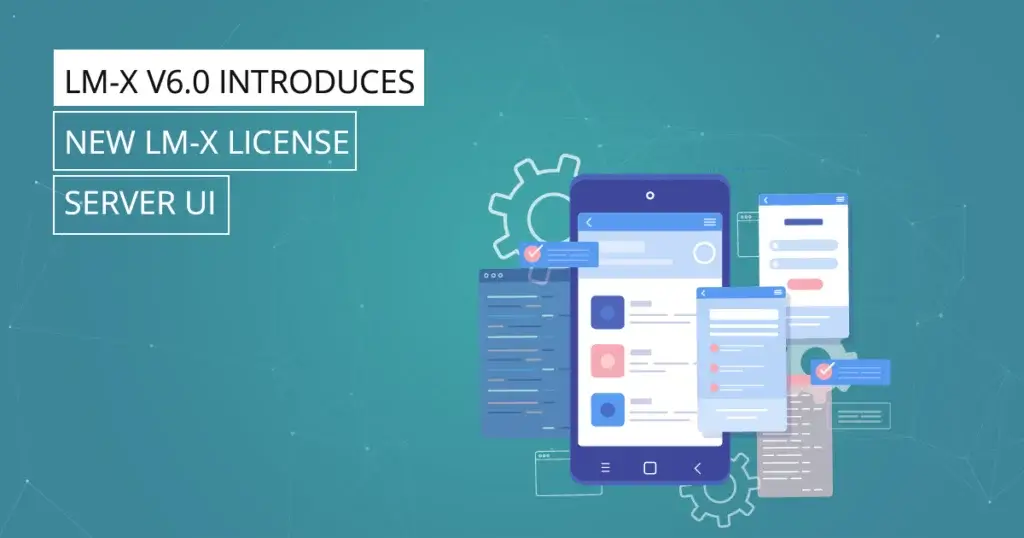Allocating Floating Licenses Across Time Zones – Best Practices
Smart license management practices are the key to effective use of floating licenses and reducing their overall cost. If your company has many users across international time zones, you can realize a significant cost savings if you know how many licenses are in active use at any given time. License Statistics is your key to unlocking those savings.
Identify Users by Time Zone
The first step in better allocating floating licenses across time zones is to identify the groups of users in each time zone. In License Statistics, you can use the Usage History view to determine exactly when users are actively using the software. For users in different time zones, you will see their usage rise as their work day begins, or see it drop as they finish their work days.
You will also want to check current usage above 24 hours to see where users have left software running without logging out. Assess those users separately, and create a strategy to mitigate those temporarily “lost” floating licenses. Having an accurate picture of floating license usage is the first step in reducing floating license costs.
Determine Actual Floating License Usage
Once you’ve sorted users or license servers by time zone, you have a clear picture of which users are using licenses and when they are using them. License Statistics provides many views into the data you can use to help develop a complete picture of usage. For example, the License Server Usage History enables you to sort server usage history to quickly identify maximum (and minimum) usage. The Usage by User Report is also invaluable in identifying peak users and usage.
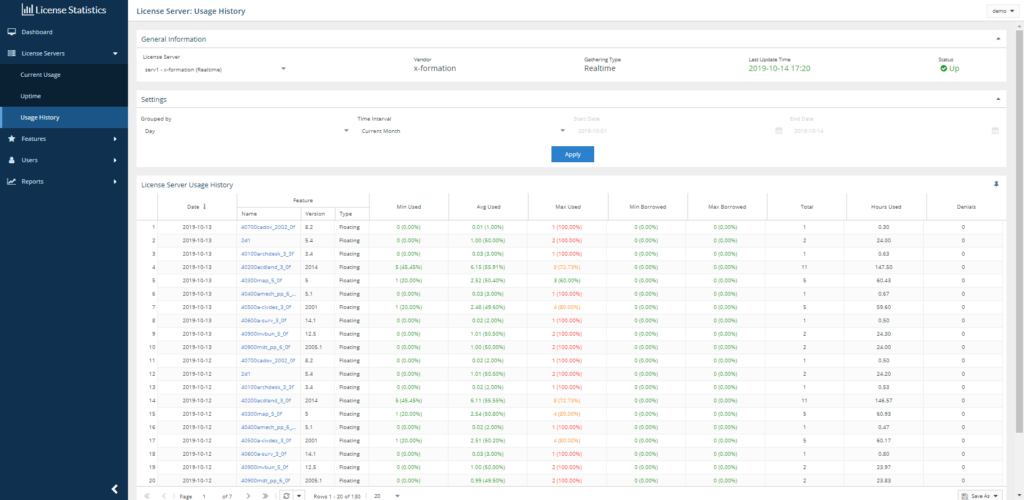
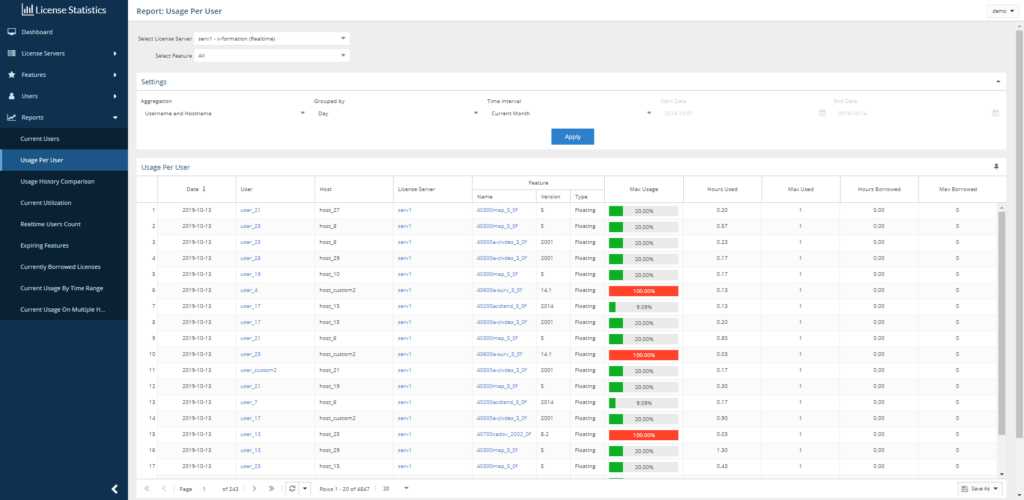
You will immediately see usage patterns emerge from the data, and across time zones you will be able to identify times during which usage for users in one time zone drops off as users in another time zone are logging on. They are non-concurrent users; you can therefore see the opportunity to decrease the total number of floating licenses needed – you do not need licenses for users who are no longer at work!
Calculate the Number of Floating Licenses Needed at Any Given Time
Since all global users are not accessing floating licenses at the same time, you can now make a better estimate of the total number of licenses needed based on actual usage across international time zones. Thus, When users are leaving for the day in Mumbai, their counterparts in the US are just coming into work. You therefore need enough floating licenses to support one group of users, not both.
A typical starting point for determining the actual number of floating licenses needed is to begin at the 50% mark. Evaluate usage over a work week using the Usage History reports to determine how many (if any) denials are occurring, then make an appropriate adjustment. Over the course of three weeks you will have determined a solid, workable number you can use – with data backup – to justify the purchase of the exact number of floating licenses needed.
Conclusion
By making a small change and then measuring results with License Statistics, you will be able to zero in on a cost-effective floating license strategy. Reevaluate floating license usage regularly with License Statistics – you will be amazed when you discover the savings hidden in your software licenses.
In a coming article we will show you how to use the License Statistics API to create your own reports and actually import data into your favorite BI dashboard.
Get to know License Statistics
[vc_row][vc_column width=”1/3″][vc_btn title=”GET TRIAL” color=”turquoise” size=”lg” align=”center” i_icon_fontawesome=”fa fa-balance-scale” add_icon=”true” link=”url:https%3A%2F%2Fwww.x-formation.com%2Flicense-statistics%2Fget-trial-version%2F|title:Get%20trial|target:%20_blank|”][/vc_column][vc_column width=”1/3″][vc_btn title=”GET PRICING” color=”turquoise” size=”lg” align=”center” i_icon_fontawesome=”fa fa-usd” add_icon=”true” link=”url:https%3A%2F%2Fwww.x-formation.com%2Flicense-statistics%2Fpricing%2F|title:Get%20pricing%20info|target:%20_blank|”][/vc_column][vc_column width=”1/3″][vc_btn title=”VIEW LIVE DEMO” color=”turquoise” size=”lg” align=”center” i_icon_fontawesome=”fa fa-desktop” add_icon=”true” link=”url:https%3A%2F%2Flicstat-demo.x-formation.com%2F%23demo|title:View%20live%20Demo|target:%20_blank|”][/vc_column][/vc_row]
